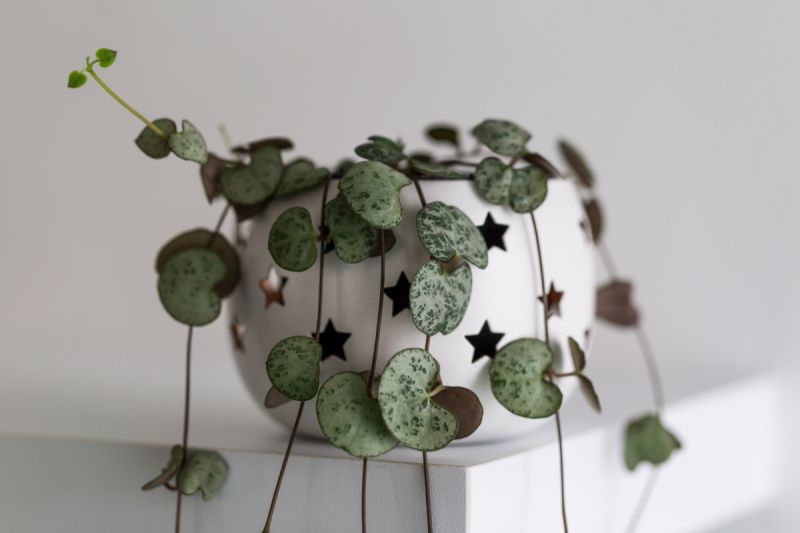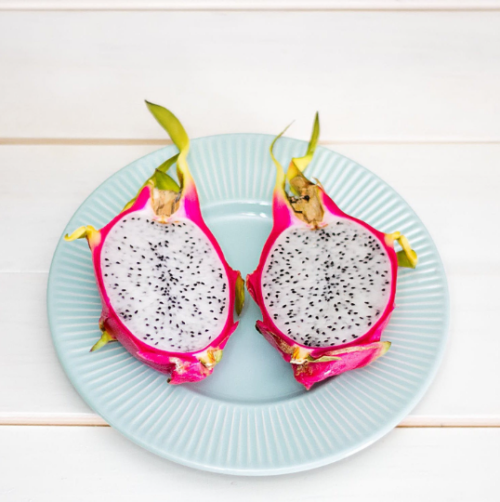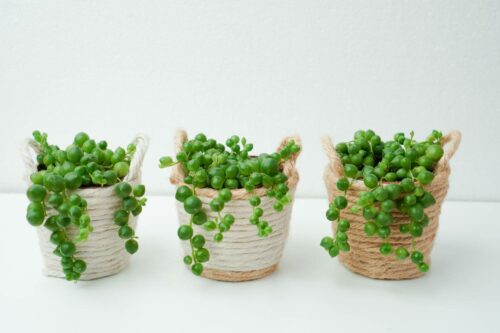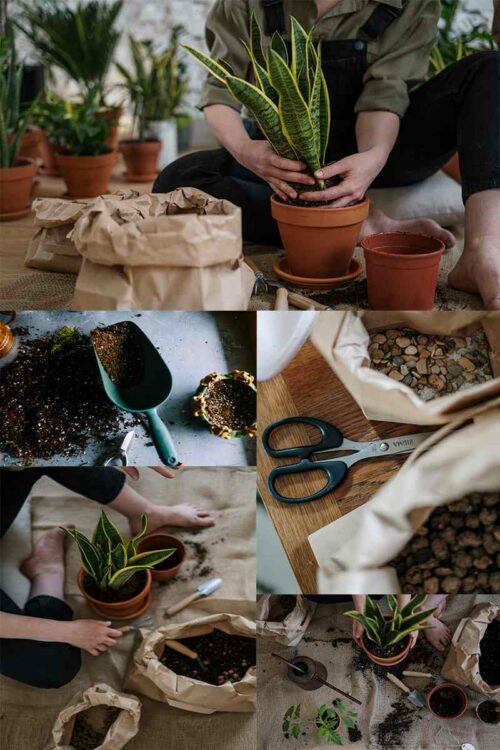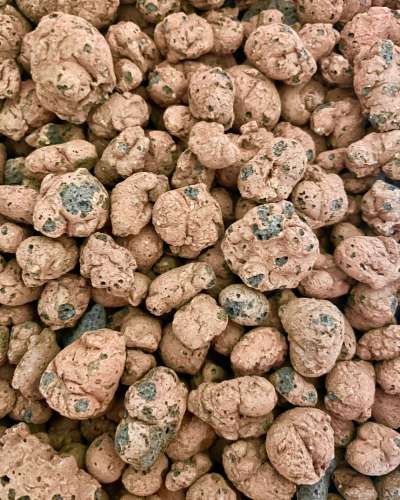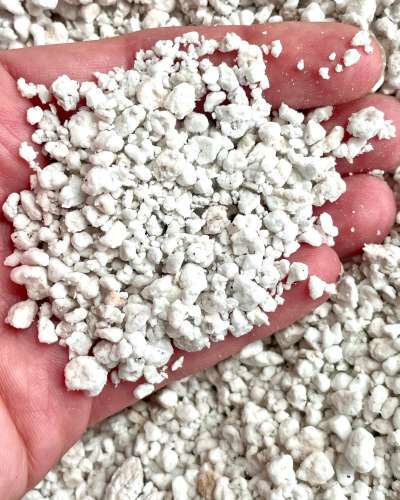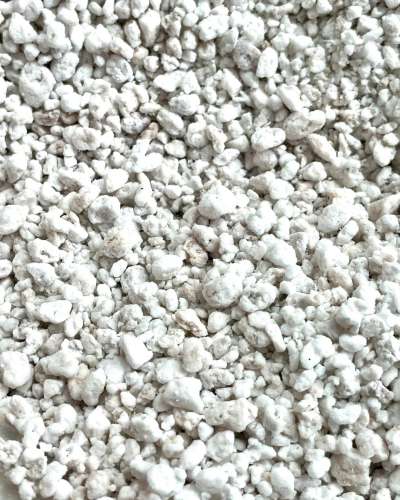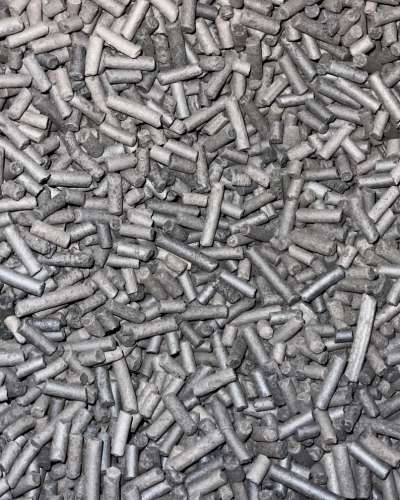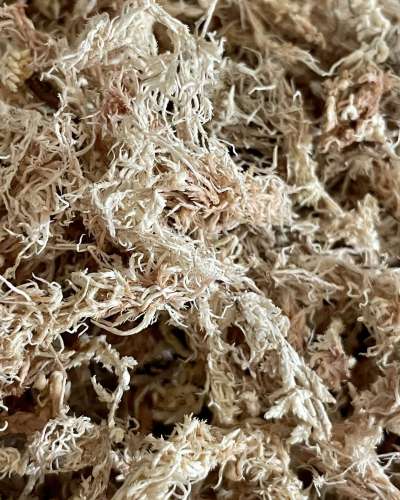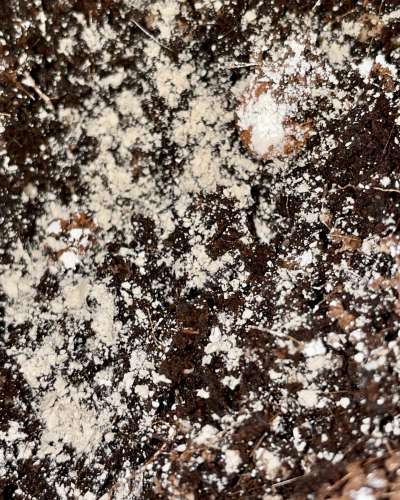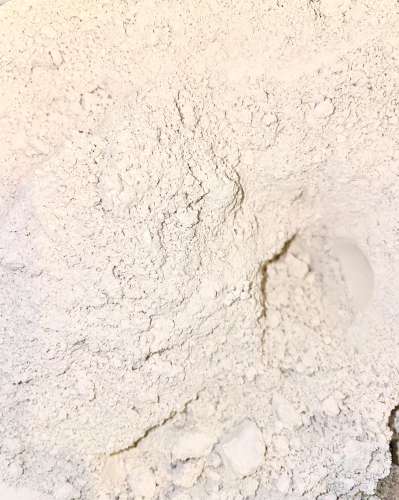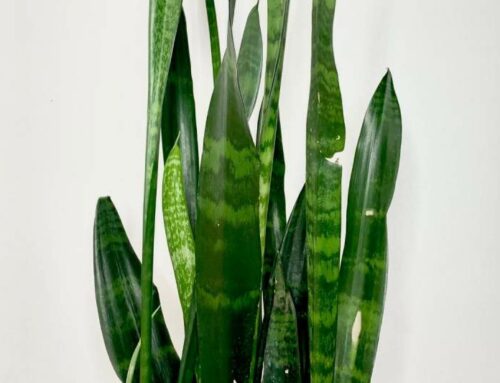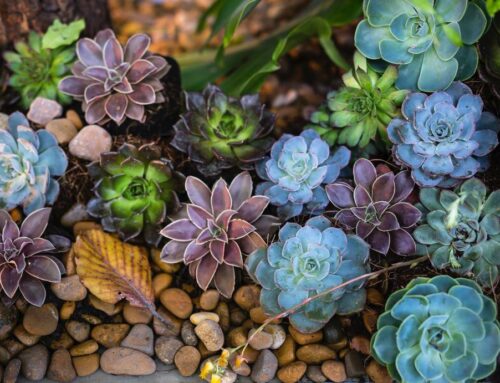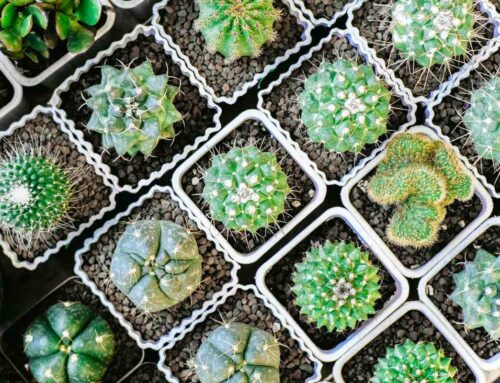How much light does a Ceropegia Woodii need? Should a succulent & cacti potting mix be used for String of Hearts? How often should I water my Ceropegia Woodii Variegata?
If you recently bought a Ceropegia, these (and more) might be questions that you are now wondering. But rest assured: Ceropegia are beginner-friendly and low-maintenance houseplants. These exotic indoor plants grow incredibly fast, thrive on water-neglect and their heart-shaped leaves are attention grabbers.
Ceropegia Woodii (botanical name: Ceropegia linearis subsp. woodii), is a subspecies from the family Asclepiadaceae (silk plants). Ceropegia Woodii is sometimes referred to String of Hearts (due to its heart-shaped leaves), Candlestick flower (due to its uniquely shaped flowers) and Rosary Vine. These plants originate in South Africa but have been widespread as an evergreen houseplant for many years due to their unique looks. Ceropegia Woodii grows best a trailing (hanging) houseplants where its vines have enough room to grow downwards, as sometimes the individual strings can reach the incredible 5m in length.
Caring for a Ceropegia plant indoors is quite easy and unlike some aroid plants, their needs are pretty straight-forward. This detailed Ceropegia Woodii plant care guide is just the thing for you if you are looking for tips, tricks and care requirements of the String of Hearts plant.
Note: there are various forms of the Ceropegia Woodii. To name a few: Ceropegia Woodii Variegata, “Ace of Spades”, Ceropegia Woodii Orange, Silver Glory, and many more. The care for those Ceropegia Woodii subspecies is identical, hence, this plant care guide applies to all.
This post may contain affiliate links. Read our Privacy Policy and Disclosure here.
Ceropegia Woodii Care – Basic Guidelines
You can find a summary of the care needs of Ceropegia in the table below.
Common Names: String of Hearts
Origin: South Africa, Swaziland, Zimbabwe
Light: bright indirect
Water: rarely
Growing media: sand-based potting mix soil with excellent drainage; substrate for cacti and succulents, pon
pH: 4-6.5
Repot: every 2 to 3 years
Temperatures: 18°C to 28°C (64.4 °F to 82.4 °F)
Humidity: up to 40%
Nutrition: fertilizer for cacti succulents with higher phosphorus to nitrogen content
Fertilize: 2 times/year with slow release fertilizer or bi-monthly with liquid one during the growing season; don’t fertilize during winter
Propagation: stem cuttings, tubers, seeds
Pests: mealy bugs, aphids, scale
Toxic? No.
Continue reading for a detailed guide on how to care for Ceropegia plants indoors.
How to Care for Ceropegia Woodii
1. How Much Light Ceropegia Woodii Need?
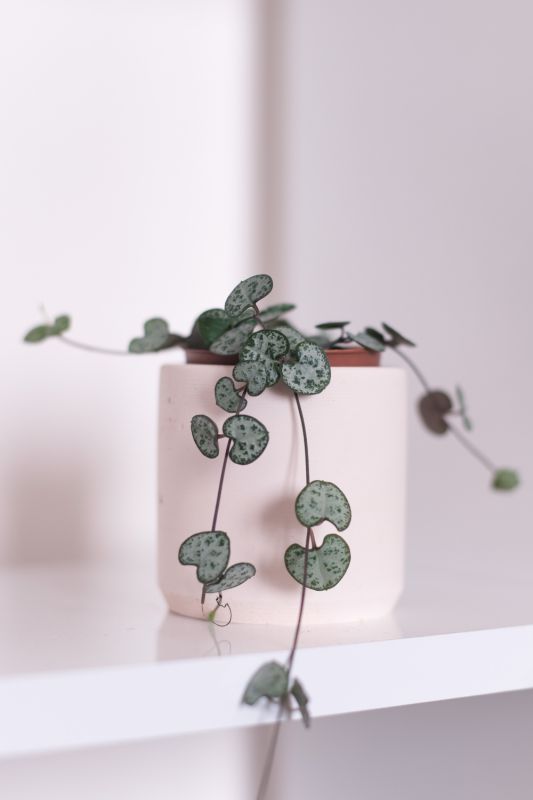
Ceropegia Woodii need bright, indirect light to thrive. The Chain of Hearts plant can tolerate a location receiving medium light but will not survive for long at a low-light spot.
The more light a Ceropegia receives, the faster it will grow, the larger its leaves will be and the distance between leave pairs on the vine will be less. However, strong, direct sunlight can scorch the leaves of the String of Hearts so should be avoided whenever possible, especially during the midday hours when the sun is at its strongest.
The best location for a Ceropegia Woodii, would be close to a window that is facing west, south-west, or south (with a curtain diffusing the light). Of course, based on different environmental factors (time of the year, physical blocks, etc), the quality and strength of light will differ.
Hint: Rotate your Ceropegia periodically to ensure equal and balanced growth on all sides and to avoid the plant going “bald” on top. The Chain of Hearts are notorious for losing their leaves at places where they are not receiving light directly. I.e. in most cases this is at the top of the pot.
Are you wondering how to choose the best spot light-wise for your Ceropegia, i.e. String of Hearts plant at your home? Or are you confused about what is bright, indirect light? We got you. Check our detailed Houseplants Light Guide to help you decide.
Signs that your Ceropegia is not receiving enough light:
As mentioned, if the vines of your Ceropegia start stretching and there is a large distance between leaf pairs, this is your plant saying: I need more light! If your String of Hearts starts producing pale leaves that never reach a green mature color or are deformed, it is another sign that the light is not enough for your semi-succulent. Leaves turning yellow or falling off, the soil staying wet for long periods, stunned growth, or your Ceropegia not flowering during the growing season, are other signs of insufficient light.
If you notice any of the signs above, consider moving your Ceropegia to a location that is receiving more light. As mentioned, Ceropegia can tolerate medium light but will quickly succumb to diseases and rot if left in a location with low light.
Don’t have an appropriate spot for your Ceropegia that receives bright, indirect light? No problem. If the natural light is not sufficient for your Ceropegia, consider a grow light.
How much light (PAR) do Ceropegia plants need? For optimal growth, aim to provide your String of Hearts with a light source that has a PPFD between 250 and 1000 umol/m2/s (assuming a 12-hour photoperiod).
How much lux (foot candles) for your Ceropegia Woodii? Regardless of the light source (i.e. natural or artificial grow light), aim to provide your Chain of Hearts with a minimum of 1,500 lux (150 foot candles) to 3, 000 lux (300 foot candles). For optimal Ceropegia plant growth, however, aim for at least 5, 000 lux (500 foot candles).
Color Light Trick: What’s the secret to having really pink leaves on your Ceropegia, especially, Ceropegia Woodii Variegata? If you want your Ceropegia to have a strong pink tint to its leaves, provide your plant with more light. If the plant receives enough light and as it matures, the leaves of your Ceropegia Variegata will start showing the amazing pink colors that we all are after! 😊
If you are confused about how to find a location at your home that receives bright, indirect light, make sure to check our detailed Lighting Guide for Houseplants now.
2. How Often to Water Ceropegia Woodii?
Ceropegia Woodii, also known as the Chain of Hearts plant, is a semi-succulent and they store a lot of moisture and nutrients in their tubers and leaves. This means that a Ceropegia does fine when dealing with some water neglect but will not tolerate being over-watered and can rot fast.
Should you water your Ceropegia on a schedule? In other words, how often do you need to water your String of Hearts? You might be able to adopt a habit to water your Ceropegia Woodii routinely. Bear in mind, however, that during the growing season from March to October, your Ceropegia will need to be watered approximately twice as much compared to the dormant season.
Depending on the temperature in the room where your Ceropegia is, the humidity and light levels, and other environmental factors, you might need to water your String of Hearts approximately weekly or every 10 days during the growing season. The watering frequency will most likely decrease during the dormant season to roughly biweekly or monthly (again, heavily dependent on environmental factors).
In all cases, however, we would strongly advise against blindly watering your Ceropegia on a fixed schedule. What we would instead recommend is to make a rough plan of round-about when your String of Hearts need to be watered but instead of pouring water on the clock, check if your plant needs a drink or can wait a couple of days more. Remember: Ceropegia will survive a couple of days being dry but can quickly deteriorate if kept too wet.
What’s the best way to water a Ceropegia Woodii?
Before you water your Ceropegia, always check if the potting soil or substrate is still moist or not. Our advice is to allow the soil to dry out between irrigations and then water your String of Hearts thoroughly until water starts coming from the bottom. Alternatively, you can also bottom-water your Ceropegia Woodii to ensure full saturation around the roots.
Are you overwatering your Ceropegia Woodii?
There are a couple of signs and symptoms to watch out for signalizing that your String of Hearts plants has been watered too frequently for its taste. The most common indicator of an overwatered String of Hearts plant is yellow leaves that fall off with ease, moldy smell and stunned growth.
Signs that a Ceropegia is underwatered: leaves that have wrinkles, leaves that are thin, thin stems, curling leaves
Hint: If you are unsure whether it is time to water your String of Hearts houseplant or not, the clue is in the plant’s leaves. If the leaves of your Ceropegia feel plump and firm to the touch, then the plant has enough water and you can check again in a couple of days. If the leaves start looking a bit wrinkled and they feel soft and squishy, then it’s time to water your String of Hearts.
3. What is the Best Potting Mix for Ceropegia Woodii?
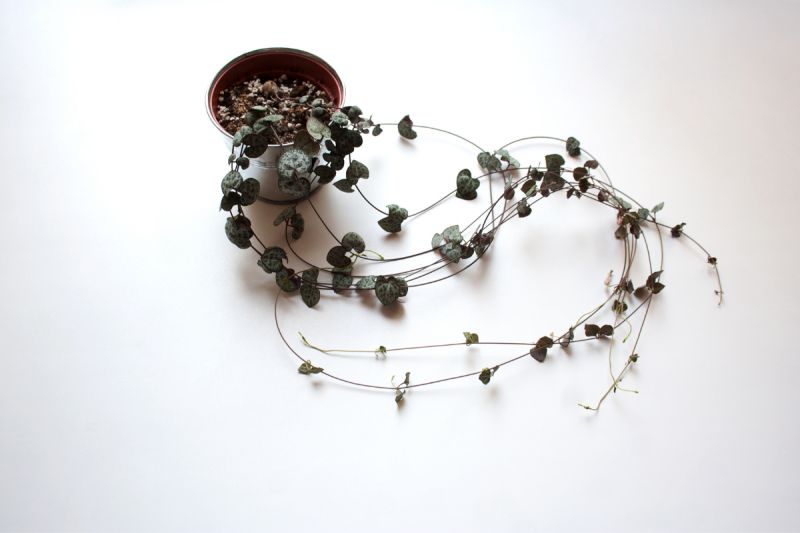
As a semi-succulent, the String of Hearts plant requires excellent aeration around its roots, this means that good drainage is vital.
Don’t use a standard potting mix for your Ceropegia, as the standard potting soils stay wet for too long and provide little oxygen to the roots which in turn can lead to rot quite fast.
Your String of Hearts can be grown in organic media but also can be successfully grown in media that is 100% free from any organic matter.
If you want to grow your Ceropegia in an organic media, you can either use store-bought cacti and succulents potting soil for your String of Hearts or go the DIY way. A basic recipe for Ceropegia Woodii potting mix would be equal parts perlite, potting soil, and coarse sand (or grit). As mentioned, good drainage is vital, so that the roots of the String of Hearts plant have room to grow, breathe, and not be clustered by wet and compact potting mixes.
Another way to go is to use an inorganic growing mix for your Ceropegia. And we have just the thing for you! We offer a specialized substrate for Cacti & Succulents that is based on lava rocks, pumice, and zeolite. Our succulents & cacti love it, and your Ceropegia Woodii will love it too! 😊
Extra tip: terracotta pots are a great choice for a Ceropegia due to the extra breathing properties of these pots.
Hint: if you have a bunch of rooted Ceropegia cuttings in water, you don’t necessarily need to plant them and can just grow and care for them as water plants in a beautiful tall vase. In other words, yes, you can grow Ceropegia in hydro or semi-hydroponics.
Here is a simple (but effective) DIY recipe for potting soil for a cactus that you can mix at home: equal parts coarse sand (fine sand won’t provide enough aeration), perlite, and good quality potting soil. Mix the ingredients listed plus a bit of love and your cactus will surely love it. 😊
Can you grow Ceropegia Woodii hydroponically? Absolutely! However, a word of caution: opt to grow String of Hearts in hydro or semi-hydro only after fresh cuttings have been rooted in water first. Else, if your Ceropegia has been growing in soil and you simply replant it in hydro or semi-hydro environment, the soil roots have high chances of rotting.
If you want to grow your String of Hearts in semi-hydro, you might wonder: should I choose LECA or pon for a Ceropegia? Since these plants have thin roots, either pon or substrate for cacti and succulents can be used for these plants as the LECA balls are usually way too big for them. Alternatively, you can crush LECA to smaller pebbles.
4. How Often to Fertilize Ceropegia Woodii and Which Fertilizer is Best?
What is the best fertilizer for Ceropegia plants? You should opt to use a fertilizer that has been formulated for cacti and succulents for your String of Hearts houseplant. The reason being is that these fertilizers usually have higher phosphorus to nitrogen ratio. If you feed your Ceropegia with a common fertilizer, say for leafy green plants, your String of Hearts will start stretching too much. If your plant is growing in a mineral substrate mix (non-organic), make sure to use a fertilizer that has been specially designed for this type of plant growing media and follow the instructions on the label.
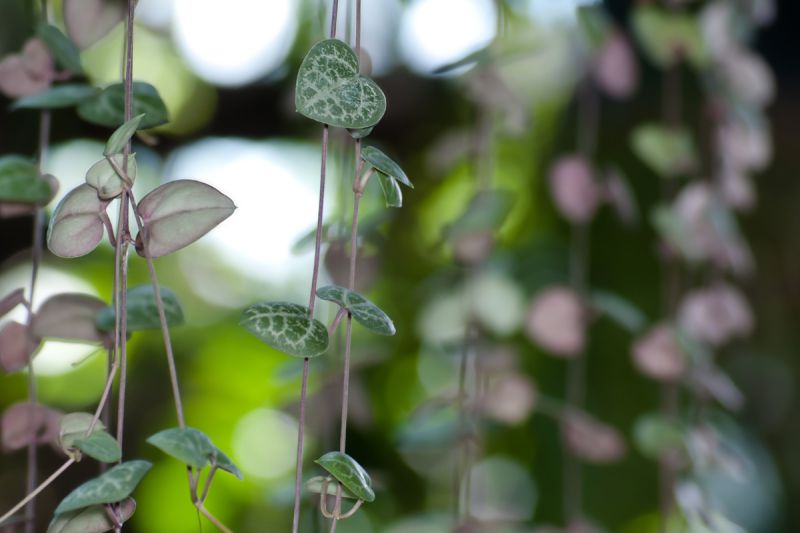
How often to fertilize String of Hearts indoor plants? You can use long-term fertilizer for cacti & succulents and apply it two times per year (for example: in early spring and mid summer) at its recommended dose or a liquid one and apply it every month. If you are using a liquid fertilizer, always start with half diluted strength at first and observe how the plant feels before upping the amount of fertilizer.
We have noticed that although Ceropegia Woodii grows fast whether it is fertilized or not, the quality of its leaves is affected if the plant is not receiving enough nutritions. For instance, on plants that have received regular fertilizer, the leaves grew bigger, the colors were more vibrant and the stems grew to be thicker compared to plants that were fertilized less frequently. So since your Ceropegia is a fast grower, it needs food accordingly.
In late autumn / early winter or if you see that your String of Hearts plant slows down (or stops) its growth, refrain from fertilizing it until the plant starts actively growing again in Spring.
Use a pH meter to measure the pH value of the water you are using to water your Ceropegia, especially, if you have added a fertilizer to it. Ideally, the pH level should be around 5.5 to ensure that your String of Hearts absorbs nutrients optimally.
5. How Much Humidity Ceropegia Woodii Needs?
You don’t need to worry about humidity levels or a humidifier for your Ceropegia Woodii as these plants thrive in normal room humidity levels. In fact, if the humidity around them is too high, let’s say going 75%+, then your Ceropegia might start suffering.
Good ventilation around the pot of your String of Hearts plant is essential to discourage pests from gathering and to give an even extra oxygen boost to the roots. You can use a hand-held fan if the air around your Ceropegia is too stagnant and you notice the plant suffering.
Using a hygrometer, you can measure the humidity in the room. If you notice that it is too high and your Ceropegia starts showing signs of too much water, i.e. leaves turning yellow, the pot taking a long time to dry, consider getting a dehumidifier to bring down the room humidity levels a notch.
Important: Ceropegia Woodii don’t like their stems and leaves getting wet and if you mist them or splash water on them too often, it might lead to fungal/bacterial diseases. So don’t mist or spray your String of Hearts plant.
Hint: If you are propagate Ceropegia cuttings, on the other hand, higher humidity speeds up the rooting. However, ensure fresh flow of air at all times.
6. The Best Growing Temperatures for Ceropegia Woodii
Ceropegia Woodii are warmth-loving plants, thus, the best temperature ranges to grow these hanging plants are between 15°C and 25°C (59°F to 77°F). If you grow your Ceropegia indoors, you don’t need to worry too much about appropriate temperature ranges as any normal room environment is fine for them.
You can grow your Ceropegia Woodii outside but make sure to bring the plant in for the colder seasons once the temperatures outside drop below 10°C (50°F). If your Ceropegia is growing outside, keep this in mind: it will stop growing when the temperatures are between 10°C and 15°C (50°F and 59°F). Anything below 10°C might result in cold-related damage and frost can potentially kill a String of Hearts plant.
Another thing to bear in mind is that although Ceropegia Woodii can tolerate environment that is unstable, i.e. humidity levels and temperatures fluctuating, what they absolutely dislike is wind as wind can dry them out way too fast. So best would be to place your String of Hearts plant in a location where it will be protected from direct exposure to drafts.
7. How to Repot Ceropegia Woodii
How often do you need to repot your String of Hearts plant? Ceropegia Woodii have a shallow root system, hence, you can keep them in the same pot for quite some time. On average, the String of Hearts plants need to be repotted every 3 to 5 years, but this number of course varies based on how fast your own houseplant grows.
Before you jump to repotting your Ceropegia Woodii, make sure that:
- it is in its active growing stage (i.e. spring or summer) and
- the plant will benefit from it. As mentioned, the roots of the Chain of Hearts are pretty delicate, so any action involving their roots is, therefore, a stressful event for the plant.
Tip: Did your Ceropegia Woodii plant just got delivered to you by mail? If your plant has just arrived, don’t jump on repotting it straight away as the plant is already under stress. Wait for about 2 weeks before you repot your Chain of Hearts after it has arrived to you.
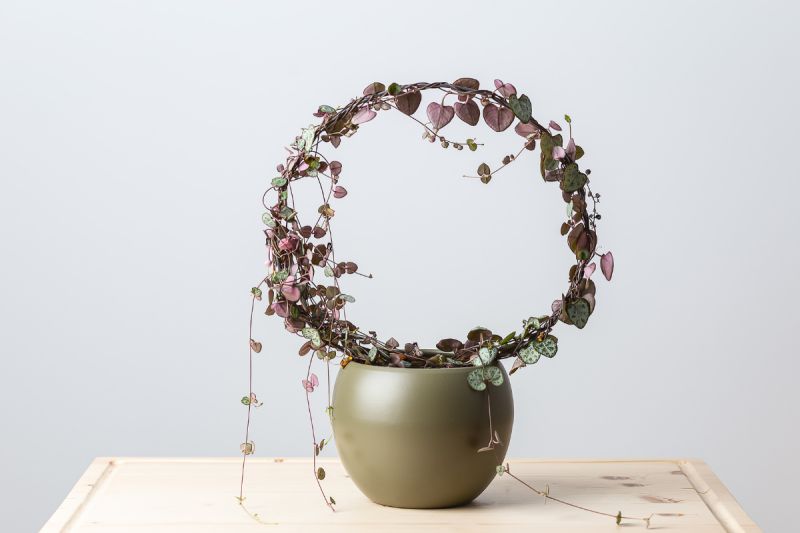
So how to repot a Ceropegia Woodii?
But to put it in short, before you start getting down to repotting business, you need to obtain a couple of things.
Prepare yourself for your Chain of Hearts repotting beforehand:
- In other words, choose the new pot for your little heart-leaf beauty. As Ceropegia Woodii are hanging (trailing) plants, a hanging pot or a macrame would be ideal for this houseplant. When picking it up, make sure that it is the next size and is not too big for your plant, and always opt for a pot with a drainage hole. Eg: if your Ceropegia Woodii is currently in a 12 cm pot, choose a 14cm or maximum a 16cm one. This will translate to if your plant is currently in a 5-inches pot, opt to use a 6-inches or maximum a 7-inches one. It is important to not plant your Chain of Hearts in a pot that is too big for it as else you might be risking some overwatering issues.
- Once you have chosen the perfect new pot for your String of Hearts, next on, it’s time to decide on whether you will grow it in a hummus-based potting mix (don’t forget: with excellent drainage!) or in an inorganic substrate for cacti and succulents.
Once you have your chosen pot and growing media for your Ceropegia, it’s time to get down to action. Here’s how to replant your String of Hearts with ease:
- Gently remove your plant from its current pot and tap the root ball to remove any excess dirt. Be gentle with the roots and try not to disturb them too much.
- Next on, fill the new pot with one-third soil or substrate for cacti and succulents, position your Ceropegia inside and fill the pot up with additional substrate.
- Water your String of Hearts thoroughly – until water starts dripping from the drainage hole, ensuring that the whole media has been well saturated.
- Place your freshly replanted Ceropegia Woodii in a location with bright, indirect light and enjoy its new growth!
Is something unclear regarding how to repot your Ceropegia? No worries. We have a detailed step-by-step guide on repotting houseplants, so make sure to check it out if something here is confusing.
8. How to Propagate Ceropegia Woodii
Propagating your Ceropegia is hassle-free, easy and fast, and allows you the opportunity to grow little gorgeous String of Hearts plants to gift to friends and family, or to make your mother-plant bulky and lush once again.
Technically, there are 3 possible ways to propagate Ceropegia plants: from seeds, tubers and cuttings.
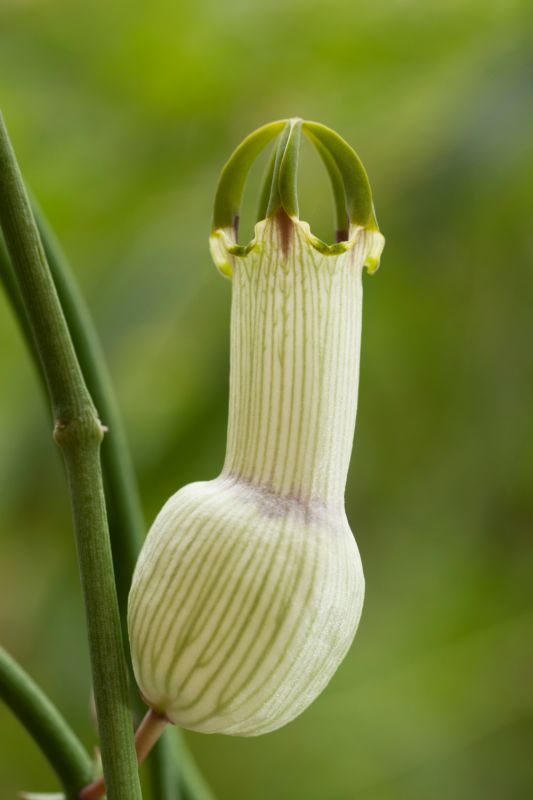
However, propagating Ceropegia Woodii from seeds is rarely done for indoor plants. The image above is showing a Ceropegia flower. The part that carries the pollen and is thus, receptive of receiving pollen, is hidden at the end of the flower. Ceropegia Woodii are not self-pollinating, hence, they require beneficial insects that are able to end this narrowing opening and reach the nectarine part.
Thefore, the most common ways to propagate the String of Hearts plant is through stem cuttings or through tubers.
Propagating Ceropegia Woodii from stem cuttings
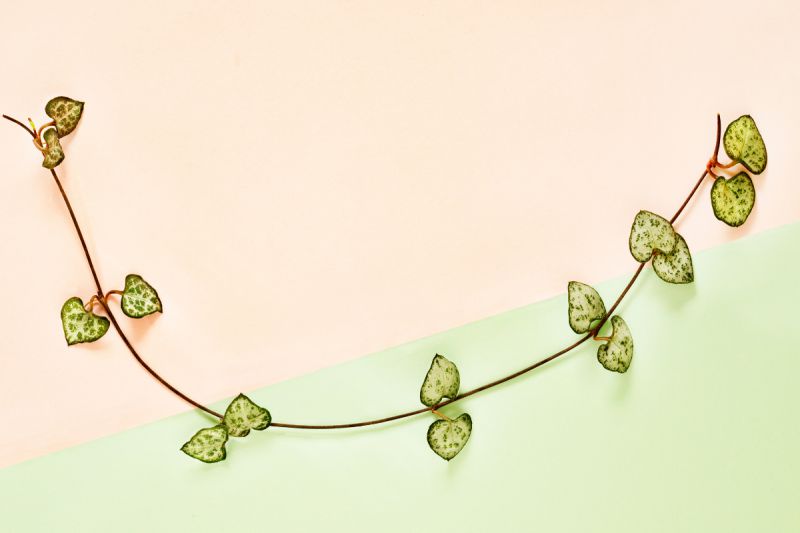
Ceropegia Woodii grow so incredibly fast that if you aren’t careful, you might find yourself soon enough with a carpet made of little heart-shaped leaves. Their rapid growth rate also makes them fantastic candidates for propagation. Taking cuts from a Ceropegia also has certain benefits for the mother plant. Stems that have been cut tend to start growing from multiple nodes, which contributes to the plant looking lusher and as Ceropegia tends to drop a whole string at a time, some natural “baldness” might occur in the pot.
If you are looking into propagating and multiplying your String of Hearts, then follow the steps below.
Step 0: Arm yourself with sharp garden shears, a disinfectant, and a paper towel.
Step 1: Take cuttings
Where is the node on the stem of a Ceropegia Woodii?
The node on the String of Hearts is located at the intersection of the leaf petiole and the stem. This means that when a pair of leaves are attached to the stem at the same stem height, there are 2 nodes there.
Look at the photo below. It is important to keep this knowledge about the node in mind as roots and new growth will spur from there. Do you see the little enlarged blub where the leaves and stem meet? This is where the node is on Ceropegia Woodii plants.
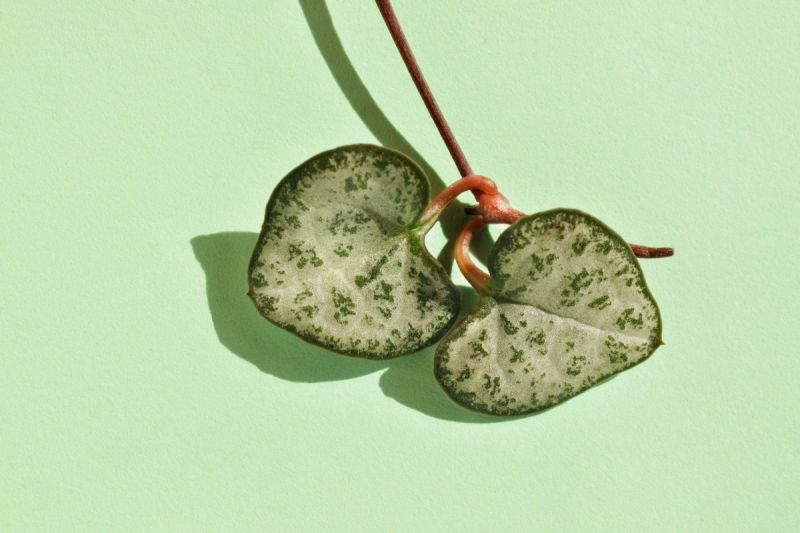
After you have located the node and decided how long your Ceropegia cuttings will be, it’s time to cut!.
Disinfect your shears and decide where would you like to cut your “mother-plant” and how many cuttings you would be taking. Make sure to not give your “mother-plant” a military-style haircut, however, and leave at least 3 pairs of leaves intact on the plant. How long each cutting will be depends entirely on you. For best results, I would recommend taking a cutting that has at least a pair of leaves, even better if there are 2 pairs of leaves.
After you have finished taking cuttings, allow the ends to callous for about an hour before proceeding with propagating your Ceropegia. This callousing-process aids in propagating Chain of Hearts cuttings successfully without having to deal with rot-related issues.
Tip: Look for tubers on the stems. Some plants, when they are mature enough, start producing these hard, stone-shaped bulbs that you can simply plant in soil (growing substrate) and a new plant will grow up from there.
Step 2: Decide on a propagation method
Ceropegia cuttings can be rooted with ease in 3 different ways: by propagating them in water, planting them directly in soil, or laying them on top of soil, ensuring that the node(s) is making direct contact with the moist surface. All propagation methods are fairly easy and depend on your personal choice. There is one thing that you would need to keep in mind, regardless of the propagation method that you opt-in for. It is all about the node.
Propagating Ceropegia Woodii in water
To propagate your String of Hearts in water, remove the lowest pair of leaves. You want to snap them off the stem without damaging the two nodes.
You want to remove these leaves as else, they would simply rot in water anyway and might bring in harmful bacteria. After the leaves are off, place the end of the cutting in a glass of water and make sure that the last node (i.e. where you just snapped the leaves off) is covered. If you have rainwater, use it. If not, distilled or tap water that has stayed for at least 24 hours will work too. Use a dark container or cover the glass with film as roots form best while kept in a dark environment (also, algae won’t be forming). Change the water every 3 days or so with a fresh one and if you notice any slimy build-up on the cutting, wash it off gently.
Tip: if possible, use the remaining leaves on the cuttings to help them hold themselves onto the edge of the container so that they would stay in position and not move around too much. Alternatively, a propagation station can make this job easier and has an added bonus: really cute home-decor element!
How long do Ceropegia cuttings take to root in water?
In about one to two weeks, you should see tiny white roots forming from the node or on the stem just below it. Once the roots are about 2-3 cm (about 1 inch) in length, you can plant them in a growing media or leave them in water and grow them as water plants. If you have opted to plant your Ceropegia cuttings in soil, be extra careful with the roots as they are quite delicate. Make sure you use a growing media for cacti and succulents that is light and airy. To help the cuttings acclimatize to their new environment, keep the media moist for about a week or so. After you notice that your new baby plant is producing new leaves, you can start treating it like a mature Ceropegia plant and can start fertilizing it (initially with a ¼ of the recommended dose).
Propagating Ceropegia Cuttings in Soil or Substrate
Alternatively to water, you can also opt-in for planting your Ceropegia cuttings directly in sterile soil or in a substrate for cacti and succulents. You have two options now.
Option 1: To propagate your String of Hearts using growing media, simply snap off the last leaf pair from the stem. Cover this last node with substrate and spray generously to ensure that it is moist.
Option 2: Simply lay your Ceropegia Woodii cutting on top of the potting soil/substrate and spray with water, making sure that the top part of the media is sufficiently moist.
Important: In both cases, you want to keep the cutting consistently hydrated, i.e. moist but not soggy.
How to care for Ceropegia Woodii cuttings:
Or in other words: what are the top things to keep in mind when propagating your String of Hearts to ensure that the cuttings will root and won’t just die.
Place your Ceropegia cuttings in a bright location that receives indirect light and keep them warm. If you don’t have a light enough spot for the cuttings, consider a grow light.
To speed up the rooting and increase your propagation chances, you could increase the humidity around the cutting. To do this, either use a humidifier and keep a humidity level of around 60-70%, use a humidity dome, a propagator, or a simple zip-lock bag. Don’t forget to aerate the Ceropegia cuttings twice daily and introduce fresh air around them, else, they might just rot.
Do you need a heating mat (propagation mat) for your Ceropegia? In most cases, especially when kept at normal room temperatures, it is not necessary to use a propagation mat to root String of Hearts cuttings.
9. How to Identify and Treat Pests on Ceropegia Woodii
Fortunately, the String of Hearts, like most cacti and succulents, is quite pest-resilient as bugs usually don’t fancy it a lot.
Mealybugs could be the only problematic unwanted visitors that you might see on your Ceropegia Woodii but even they don’t favor this plant a lot.
In the case of mealybugs on your String of Hearts, try to physically remove the little crawlers by a cotton pad dipped in rubbing alcohol. If possible, giving your Ceropegia a good shower (but doing your best to not get any water inside of the pot), might also remove the mealybugs from the plant. Next on, apply your chosen natural insecticide (like neem oil or a home-made insecticidal soap) and repeat whenever necessary.
Psst, Diatomaceous Earth can help you get rid of mealybugs on your Ceropegia. Simply sprinkle it generously on top of the plant as good as possible. The fossils will dry out the mealbugs on contact and help get rid of them.
Fungus gnats can be a bit of a problem right after you water the plant, so the best would be to opt for bottom watering your Ceropegia if fungus gnats have been making your life miserable. You can also sprinkle Diatomaceous Earth generously on top of the soil and repeat whenever necessary. Alternatively, you can opt to plant your String of Hearts in a substrate for cacti & succulents rather than using hummus-based soil for it, which will help with a fungus gnats issue.
For more information on signs and symptoms of pests on plants: read our detailed guide on how to recognize pests on your plants (and on your Ceropegia too!), and how to get rid of them for good, before they wreak havoc on your plant-family.
10. Ceropegia Woodii Care: Common Issues with the String of Hearts Plant
Ceropegia are quite resilient plants so if yours is feeling a bit under the weather, chances are the problem is caused either by light or by water.
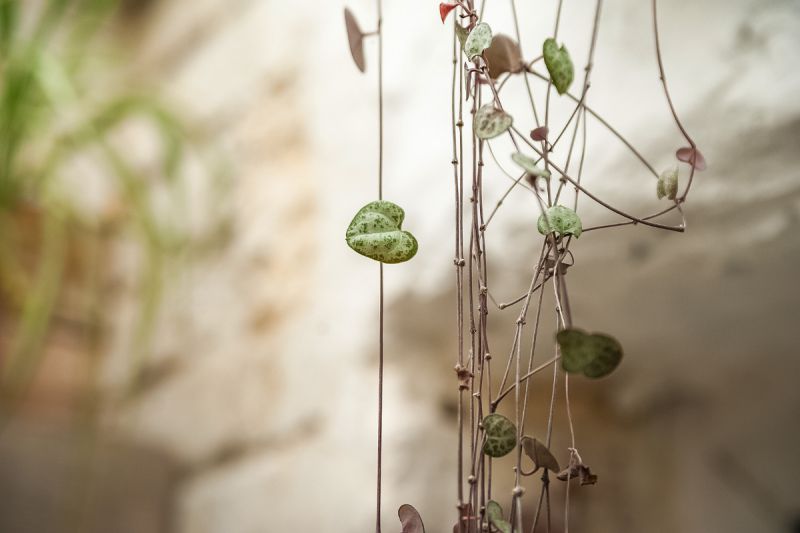
Unlike most houseplants, it is not very usual for a Ceropegia to start getting yellow leaves and shedding them. Singular leaves here and there turning yellow and falling off, are completely normal as they might have been physically damaged due to the delicate nature of the plant. But if you notice leaves are turning brown and dying off one after the other, it could be that a whole stem has died out. Usually, a dead stem will appear much thinner, so try to trace it back to the pot and remove it from the rest of the strings. The String of Hearts comprises multiple stems so a whole stem dying off is not unusual.
Signs that your Ceropegia Woodii is overwatered:
If you notice that multiple leaves on different stems are suddenly turning yellow and dying off, chances are that you are dealing with some root damage either caused by the plant being over-watered or by root rot. If the problem has been caught early on and the case has been addressed (i.e. either too much water or too little light), usually, your String of Hearts will bounce back quite fast. However, if you notice that there is a foul smell (or moldy smell) coming from the pot and if your Ceropegia isn’t getting better, then the issue might be more problematic than initially assessed.
Other symptoms of an overwatered String of Hearts plant:
If you suspect that you might have overwatered your Ceropegia, you could also spot other tell-tale signs of this (apart from yellow leaves that fall off). As too much water enters the leaves, some of the cells in them might get damaged and ruptured. This is called edema and on Ceropegia looks like brown, watery spots where the extra moisture has damaged these parts (read further down for more info on plant edema). Usually, these spots are localized and they appear on the youngest leaves and do not really spread. Another common sign that your String of Hearts is getting water way too often is the appearance of yellow, plump leaves that fall off from the stem with ease and look as if they are water balloons.
How to save a String of Hearts plant that has been overwatered: Once again, as long as you catch the issue and address it straight away, your Ceropegia can bounce back and recover from being over-watered in no time. Make sure you also correct your care routine to avoid this scenario in the future.
In some cases, to save a Ceropegia that has been overwatered, it will be enough to just provide the plant with better airflow, more light and let it dry out completely before being watered again. However, if this doesn’t seem to be helping your plant, and your String of Hearts starts looking from bad to worse: it might then be a good idea to remove the plant from its pot and inspect the roots. Remove any dead or funky-looking roots, and replant your Ceropegia in a fresh growing substrate for Cacti & Succulents. Provide the light with bright, indirect light, keep it warm and ensure sufficient airflow.
A plant becomes over-watered when it is being watered much more frequently than it actually needs. A lot of environmental factors can contribute to this. For instance, the temperature in the room where the plant is located, the intensity and duration of light that it is receiving, and the growing media in which it is planted. Thus, addressing the cause of your Ceropegia being over-watered is important.
As mentioned, rotting issues are generally cased either by watering a plant too frequently, or by the plant’s growing media not being able to dry-out fast enough. The later is usually caused by the plant not receiving adequate light and not having a good airflow around it.
Here are some signs that your Ceropegia Woodii isn’t receiving enough light:
- pale leaves with less dark-coloured markings on them
- long stems with only a few leaves on them, i.e. the distance between leaf-pairs is big
- overall dull look of the plant
- the plant grows smaller leaves
- the plant goes bald at one part of the pot – this could be especially the case if the plant is not receiving light from above but from the side, as is the case for most plants grown next to a window
Signs that your Ceropegia is under-watered:
On the other hand, next to the over-watering issue, stands completely the opposite – your Ceropegia being too dry. Luckily, these semi-succulents are quite draught-tolerant and will usually not suffer any major damage if you forget to water it. But just so that you would know and wouldn’t need to guess, signs that your String of Hearts could use water more frequently include:
- soft, mushy leaves that have a “wrinkly” appearance
- stems that get thinner
- leaves curling inwards
If your String of Hearts plant is exhibiting any of the above mentioned – it’s time to water your houseplant thoroughly. Unfortunately, if your Ceropegia has been drastically underwatered, the inward curled-up leaves will not restore their usual shape but if they only feel soft and wrinkly, once you give your plant a good sip, they should bounce back in no time.
Have you noticed that water drips out unusually fast from the draining hole after your water your Ceropegia? Your plant could be root bound or the soil could have become hydrophobic.
Fungal and bacterial problems affecting Ceropegia Woodii plants:
Ceropegia usually don’t fall victim to fungi and bacterial infection apart from when their leaves are constantly wet and there isn’t a good airflow around the plant. In those cases, a common fungal disease that can affect the String of Hearts is Mildew. You could use a fungicide against it but they are usually ineffective once the disease has started and should rather be used preventively.
Powdery mildew looks… well, like powdery spots on the upper sides of the leaves of your Ceropegia. These spots are usually off-white in color and have a circular growing pattern. They can be wiped with a wet tissue but will come back quite fast. Powdery mildew thrives when the environment allows it to, i.e. it likes it cold, dark, wet and without much airflow.
How to save String of Hearts plant from fungal disease: If your Ceropegia is suffering from a fungal problem, the best that you could do is to quarantine it first and foremost as fungal diseases are highly contagious and can easily spread from one plant to another. Next on, carefully remove all affected leaves with wet tissue. Use wet tissue instead of a dry one, as the wet surface will prevent fungal spores from flying freely around, and the chances that these spores land on other plants in your collection decrease. Place your Ceropegia in a location with bright, indirect light, good airflow, and avoid splashing water on the leaves.
How to prevent fungus on Ceropegia Woodii plants: Remember: fungus spread and grows if the environmental conditions are favorable. Powder mildew grows and thrives whenever in wet conditions without adequate airflow and unsifficient light. In other words, to prevent fungus on your String of Hearts, avoid misting the plant at all costs and if the humidity around it is too high, either increase the airflow and the light, or consider a dehumidifier. To avoid the leaves of your Ceropegia from getting wet, you might want to consider bottom-watering your plant instead of watering it from the top. So once the environmental conditions around your Ceropegia have been corrected, your plant shouldn’t fall victim to mildew fungus again and at all.
Edema on Ceropegia Woodii:
What is edema (oedema) on plants and is it contagious? The good news is, that even though you might notice some edema-based spots on your Ceropegia Woodii, these are not contagious as edema is a physiological problem with the houseplant, not a disease or a pest.
How to recognize edema on the String of Hearts? The edema spots look brown, have a slightly wet and glance appearance, and in some cases might look slightly elevated: like a flat bubble that you would get after burning yourself.
The image below is showing how an edema spot looks on a leaf of Ceropegia Woodii Variegata.
What causes edema on Ceropegia Woodii? Water! Or in more detail: water getting into the plant and not being able to leave it in time. I.e. edema spots indicate that your String of Hearts plant has absorbed more water than it can handle and since it can’t leave the plant through its leaves (transpiration & evaporation), the cells where the excess water is eventually burst. There is no magic fix for edema spots that have already occurred (dead cells) but you can prevent them in the future.
To prevent edema on your String of Hearts, ensure that the plant is not sitting in a puddle of water and that the soil has adequate time to dry out between irrigations. Excellent drainage, adequate airflow around the plant and absolutely no misting your Ceropegia are other recommendations to avoid edema-related spots on your String of Hearts.
11. Can You Grow Ceropegia Woodii in a Terrarium?
Terrarium-grown houseplants are gaining more and more popularity and for a good reason: a little ecosystem, instead of the usual plant in a pot scenario, looks gorgeous. Ceropegia can be grown in a terrarium due to their not outrageous root growth and their relatively small size of leaves. However, bear in mind, that String of Hearts plants can grow crazily fast and you might need to trim your plant quite often as it might outgrow the terrarium enclosure quite fast.
If you opt to grow your Ceropegia in a terrarium, choose one that is open, i.e. no lid. Once you’ve chosen the terrarium container, it’s time to arm yourself with the rest necessary terrarium building essentials. To make things easier for you and your String of Hearts, we have a DIY Terrarium Set for Cacti & Succulents in our shop that includes all essential substrates to get you started.
Knowing how to build a plant-terrarium properly so that your plants can thrive inside is an important part of growing houseplants this way. Make sure to check out our step-by-step guide on how to build a terrarium for plants.
12. Are Ceropegia Toxic?
Fortunately, your String of Hearts is not toxic if ingested by you or your pets. So the plant is safe around your cat, dog, or baby.
However, be prepared for your String of Hearts to take over the space quite fast. The leaves have a very particular structure and they are able to get entangled in just about anything. And detangling them is… well, let’s say it tests your patience. 😊 So keep your Ceropegia Woodii away from any direct contact with objects or you might end up with a little hearty mess on your hands.
Ceropegia Woodii Care: Final Thoughts
In this detailed guide to caring for Ceropegia Woodii houseplants, various plant needs were discussed, including light, watering frequency, propagation, and dealing with pests, and diseases.
Ceropegia Woodii, also called String (or Chain) of Hearts, and Rosery Vine, is a beginner-friendly semi-succulent, that has gorgeous heart-shaped leaves, grows crazily fast, and can be propagated with ease. The golden rule to keep these easy and beautiful houseplants happy, and healthy is to provide them with plenty of light and to allow the soil to dry out between irrigations.
Whichever Ceropegia Woodii you have, i.e. Variegata, Ace of Spades, Orange, their care is identical and they look equally stunning – making the Ceropegia varieties a must-have for any plant lover regardless of whether you are an experienced grower or one just starting a plant-family journey. 😊

